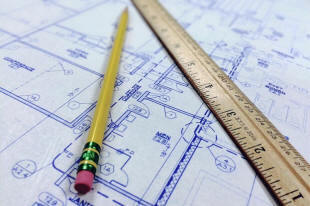Planning a lesson step by step: some examples

You should have followed the general guide to planning before coming here (new tab). But no matter.
 |
3 types of lesson |
There are all sorts of lessons but they can, slightly loosely, be boiled down to three sorts.
  |
Task 1:
Think for a moment about the kinds of lessons you have
experienced in your own life and make a short list of the
sorts of lessons you encountered. They don't need to
be language lessons. Click here when you have a list of two or three. |
- Lessons that were intended to teach something new.
Lessons like this involved, probably, a stage when knowledge was presented to you, you were expected to apply it and at the end you may have been asked to say what you had learnt.
This is a presentation and practice lesson. - Lessons which were intended to improve some kind of
skill.
These were probably quite practical and involved you doing something rather than listening and writing things down.
This is a skills lesson. - Lessons which were intended to revise and reinforce
what you already knew.
These lessons probably had a very short introduction which just told you what you were going to practise or do and then you got on with it and did it.
This is, rather obviously, a revision lesson.
So, the first question to answer when you sit down to plan a
lesson is: What sort of lesson is it?
The answer will determine how it is structured.
 |
Stages |
presentation lessons
These will need three stages at least. Here they are:
- presenting the new language or skill
- carefully practising the language or skill in a situation which avoids too much error. In other words, this stage must be quite tightly controlled
- using the new language or skill more freely and in a way which is personal and clearly relevant to the learners
Now you need to download an example of a plan of this sort. Click here to do that. The plan will open in an new tab so you can have it on screen or print it out (or even use it!).
 |
Task 2: Read through the plan to identify
:
|
| Click here when you have done that. | |
- Stage 1 (15 minutes) is the presentation phase.
Here the learners look at the pictures and try to identify the name of the activity. If they can't, the teacher has to provide it (or the learners could use their dictionaries / ask each other etc.).
Not that the teacher's job here is to supply and model language. That's what presentation is all about. - Stage 2 (15 minutes) is very tightly controlled practice.
All the learners have to do is change positive sentences to negative ones and vice versa. They change, e.g., I like fishing to I don't like fishing or I like shopping to I hate shopping / I don't like shopping.
The aim here is to get the learners to use the language accurately so the task is simple. The teacher's role is to monitor and spot problems, helping people to get it right. - Stage 3 (15 minutes) is freer practice and gets the students
moving around (often A Very Good Thing).
Notice that the language is, again, personalised for the students. They have to ask and answer questions in a way which is true for them. Making language personal makes it memorable. - Stage 4 (15 minutes) is revision and a bit of fun. If the lesson has overrun (it is planned for 60 minutes but could take longer and probably would with a large class) then this stage can be left until later and form the basis of a revision lesson.
This is an example of what is called a PPP lesson: Present –
Practise – Produce. It is probably the most commonly
used plan in the profession.
The lesson staging can be used for many different purposes.
For example, it could easily be adapted to present and practise
things you are allowed to do (I can ...) and things that
are forbidden (We can't ... / mustn't ...). All
that's needed is some different pictures and a change to the
worksheet.
skills lessons
 |
Task 3:
Now
download a skill lesson plan and do the same thing. Read through the plan to identify
:
|
| Click here when you have done that. | |
- Stage 1 presents the target of the lesson by getting the
learners to look at a model text and analyse it.
If this were a speaking lesson, this might be done through the learners reading / watching / listening to a model dialogue or some other form of speaking. - Stage 2 focuses on the language the learners will need to
complete the task.
This is an important stage because it is very frustrating to be asked to complete a task for which you know you don't have the resources. - Stage 3 gets the learners to cooperate in brainstorming what
they are going to write.
This, too, is an important stage because it allows the learners a bit of time and space to get their ideas together. We all perform better with a bit of preparation. - Stages 4 and 5 could be left to a later lesson.
This is the productive stage and again asks the learners to cooperate to produce a result. Note that the result is valued by, in this case, a poster presentation for everyone to read. It could be done orally but this is a writing lesson so it's logical to pair it with reading.
revision lessons
 |
Task 4: There's no example for this because, rather obviously, it depends on what you are revising. For the two lessons above, however, think for a moment about how you might revise the targets and then click here. |
- The personal likes and dislikes language could be recycled
in a number of ways, including:
- getting the learners to carry out a survey of another group's likes and dislikes
- reading a text about someone's likes and dislikes and reporting back
- writing a letter / email setting out one's likes and dislikes
- The report-writing lesson target could be revised by also:
- getting the learners to tell you / each other how a report is written
- getting the learners to write a report on something different
- getting the learners to present an oral report to the class with one topic for each group
The important thing is that language and skills lessons need to be revised.
There's no test in this area (there were enough already) but now you can go and plan a lesson!
| Related guides | |
| planning | for the first guide which discusses the background to planning |
| needs analyses | for a guide to how to find out what learners need to learn which will inform aim setting |
| lesson structures | to see how the overall shape of lessons can vary |
| activity types | for a guide to the three essential forms of activities and what they do |
| task types | to see how the types of task may affect what you are planning to do |
| Bloom's taxonomy | this is a categorisation of objectives in teaching which can help to set challenges |
There are some more examples of plans you can copy, use adapt or analyse in the teachers' section of this site.
